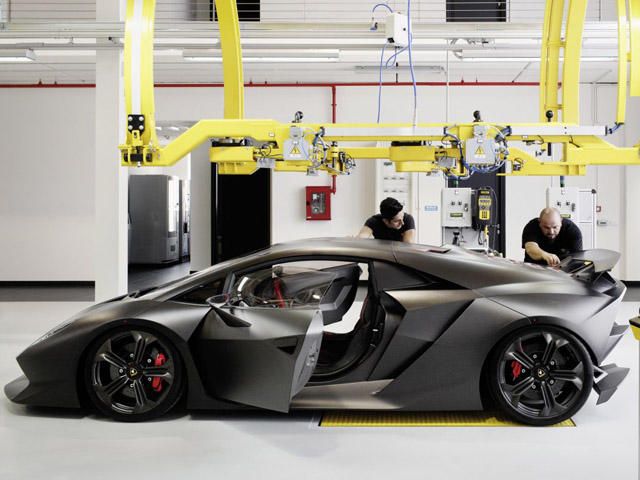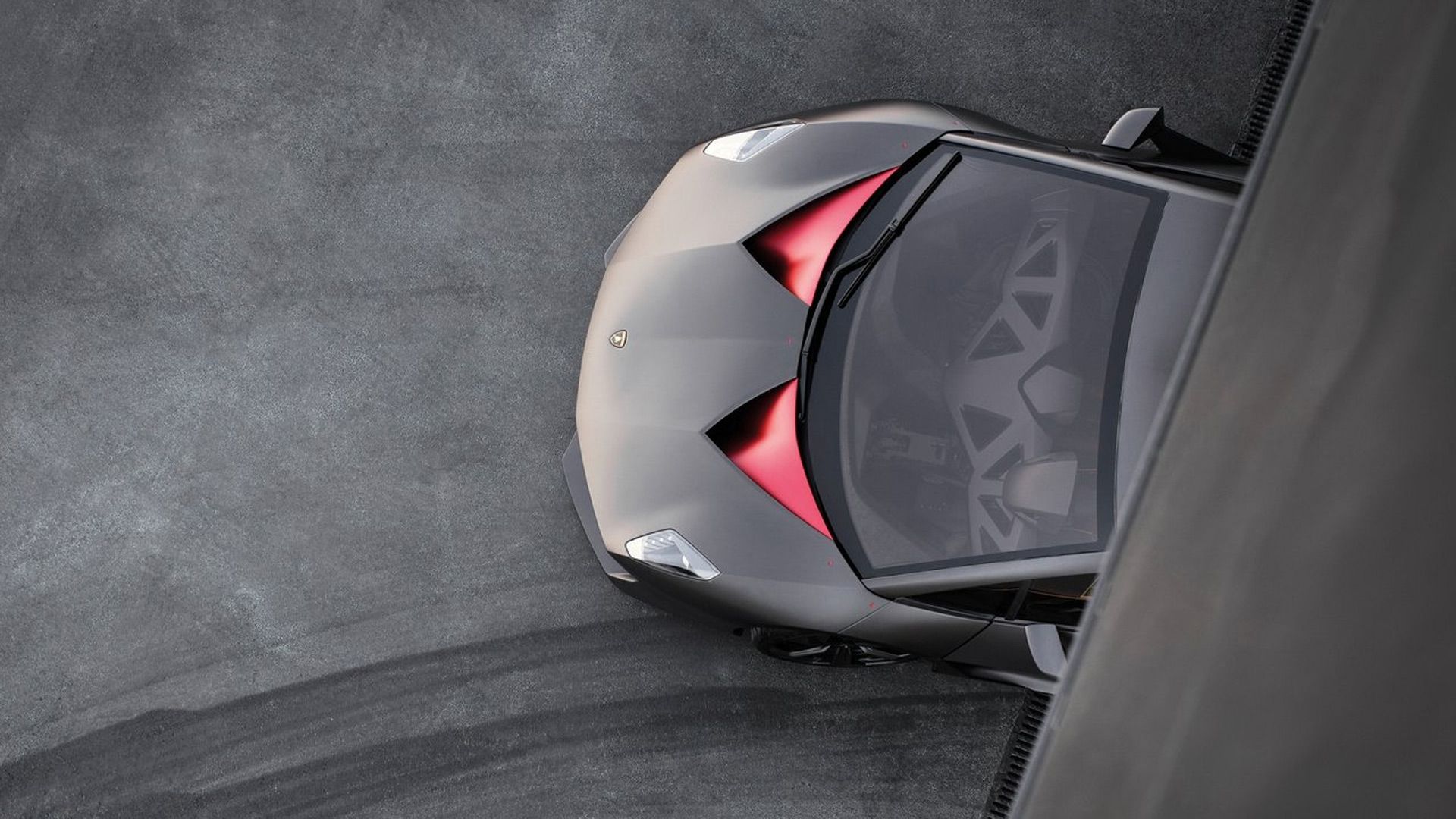The idea of a supercar with a V10 engine and all-wheel drive weighing less than a Mazda MX-5 Miata seems unlikely, but Lamborghini pulled it off more than a decade ago when it unveiled the Sesto Elemento at the 2010 Paris Auto Show. The stunning supercar was meant to remain a concept, but overwhelming interest led to a limited production run of just 20 units being announced a year later, making it one of the earliest entries in Lamborghini’s “few-off” series of ultra-exclusive models. The first was the Murciélago-based Reventón from a few years earlier.
Lamborghini
- Founded
-
1963
- Founder
-
Ferruccio Lamborghini
- Headquarters
-
SantÁgata Bolognese
- Owned By
-
Audi
The Sesto Elemento was based on the Gallardo, Lamborghini’s entry-level supercar at the time, but featured a unique carbon-fiber monocoque chassis and a host of additional weight-saving modifications that helped get its curb weight down to just 999 kilograms, or 2,202 pounds. This reliance on carbon fiber was highlighted by the car’s name, which in Italian means “Sixth Element,” a reference to carbon being the sixth element in the periodic table.
A Study In Lightweighting
In the late 2000s, Lamborghini began seriously exploring carbon-fiber technology as a key method to enhance the performance of its supercars. Recognizing the potential of advanced composites to reduce weight while increasing strength and rigidity, the automaker took a strategic step in 2009 by establishing a dedicated composite materials laboratory at the University of Washington in Seattle. The location, far from Lamborghini’s headquarters in Sant’Agata Bolognese, was deliberate: being close to Boeing’s massive aerospace manufacturing facilities allowed Lamborghini to collaborate with researchers who were developing cutting-edge composite technologies for the aerospace industry.
One of the most significant breakthroughs was the development of what Lamborghini calls forged composites. Traditional carbon-fiber production involves laying sheets of woven fibers, typically pre-impregnated with resin, into molds prior to curing – a process that is labor-intensive, costly, and prone to errors. Forged composites are created by compressing small, chopped carbon-fiber pieces – often taken from offcuts or recycled materials – and mixing these with resin inside a mold. The resulting composite material is nearly as strong as conventional carbon fiber but can be produced faster and at lower cost. Some parts can take just minutes to produce.

Related
Retro Italian Sports Car With V8 Power, Carbon Construction Heads To Goodwood
Italian startup Mignatta is ready to show its retro sports car to the public for the first time.
Lamborghini first showcased the potential of forged composites on the Sesto Elemento. It was used for the car’s central monocoque chassis, the front subframe, crash boxes, and body panels. Major suspension components, along with the driveshaft and wheels, were also made from carbon fiber, while the exhaust tips were made from Pyrosic, a glass-ceramic composite capable of sustaining high temperatures.
The Design And Specifications
|
Lamborghini Sesto Elemento |
|
|---|---|
|
Engine |
5.2-liter V10 |
|
Power |
562 hp |
|
Torque |
398 lb-ft |
|
Drivetrain |
6-speed automated manual/All-wheel drive |
|
0-60 mph |
2.5 seconds |
|
Top speed |
Over 186 mph |
|
Curb weight |
2,202 pounds |
The Lamborghini Sesto Elemento’s intensive use of carbon fiber allowed engineers to achieve an astonishing curb weight of just 2,202 lbs – the first time Lamborghini had built a car this light since the Countach Evoluzione, which was a similar study in composite materials developed under Horacio Pagani before he went off to start his own supercar company. To put this kind of weight into perspective, it’s roughly 100 lbs lighter than the current Mazda MX-5 Miata and a full 1,000 lbs less than the Gallardo on which it is based. While the Sesto Elemento was designed primarily as a track-focused car rather than an everyday supercar – making it not exactly an apples-to-apples comparison – the weight difference remains remarkably impressive.
What’s particularly noteworthy is that Lamborghini did not sacrifice its signature all-wheel-drive system in pursuit of weight savings. This is despite the fact that a rear-wheel-drive Gallardo variant – the LP 550-2 Valentino Balboni – had debuted a year earlier. Instead, Lamborghini adopted innovative design techniques to reduce weight elsewhere. One such technique was the merging of typically separate body parts into large, integrated superstructures; for example, the front fenders were combined with the front hood, and a similar approach was taken at the rear. These superstructures attach to the chassis using fasteners, allowing for quick removal and reinstallation during maintenance or repairs, while also simplifying construction and trimming excess weight.

Related
The V10 Lamborghini That Inspired The Gallardo
The Lambo concept we wish had gone into production.
This philosophy of eliminating unnecessary elements extended into the cabin as well. The interior was stripped down to the essentials, with no trim used except where absolutely necessary, such as on the seats. Components that couldn’t be removed were still optimized for lightness. For example, triangular cut-outs were strategically added to reduce weight while preserving structural integrity. Even the center console was minimalist, featuring only three buttons: one to start the engine, one to engage reverse gear, and one to operate the lights.
Straight To Production
Lamborghini confirmed the Sesto Elemento would enter production as a track-only car just a year after the concept’s debut, with CEO Stephan Winkelmann making the announcement at the 2011 Frankfurt Auto Show. At the time, Lamborghini was also unveiling the Gallardo LP 570-4 Super Trofeo Stradale. Winkelmann stated that the decision to build the Sesto Elemento was driven by strong interest from the public, with enough customer requests to justify creating a production run.
The final price was believed to be over $2 million, a staggering figure at the time. Coming just after the global financial crisis, well-heeled buyers were a little more conservative with their spending than they are today, especially in regards to a car that could be driven on the track only. As a result, Lamborghini never officially confirmed whether all 20 planned units were actually sold. However, several examples have surfaced on the used market over the years, confirming that at least a portion of the run was indeed delivered to the public.

Related
Lambo Starts Sesto Elemento Production
For a million and a half euros, you can buy this limited-edition lightweight Lamborghini prototype, which has just started production on a dedicated assembly line in Sant’Agata Bolognese.
Very little changed between the concept and the production Sesto Elemento. Lamborghini retained almost all the original design, including the raw carbon-fiber exterior protected by a matte clear coat. This wasn’t just ordinary black carbon fiber, either. In the final production stage, Lamborghini applied a special treatment containing microscopic red crystal flakes, giving the surfaces a distinctive red shimmer when viewed under light. Interior tweaks were minimal but practical, with added driver controls and a more informative digital gauge cluster.
Still Influences Cars Today
Lamborghini’s few-off cars like the Sesto Elemento aren’t simply created to appease well-heeled supercar fans looking to expand their private collections. These exclusive models serve a deeper purpose: they preview future design directions and technological innovations for the brand. This approach began with the Reventón, which introduced digital gauge clusters. The practice continued with the Sesto Elemento, which, during its reveal, Winkelmann emphasized that every future model would carry the influence of what he called the “spirit of the Sesto Elemento,” highlighting how crucial weight reduction and performance-driven design had become for the brand.
This tradition of few-offs has continued over the years with successive models. The Veneno, for example, explored advanced aerodynamics, while the later Sián took a step toward electrification. Now, Lamborghini is about to begin a new chapter with an upcoming few-off based on the Revuelto, set to be unveiled in mid-August during Monterey Car Week. The automaker states this new model will map out the future of the brand, continuing the legacy of these unique cars as both testbeds and showcases for Lamborghini’s next innovations.
Sources: Lamborghini

